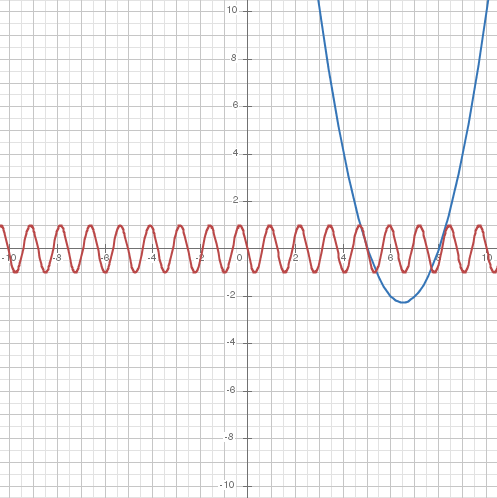CalcMe exercises solutions
Becoming familiar with the interface and basic commands
Write a CalcMe algorithm that does the following actions in the order they appear:
Define the variable y as the quotient of 39 divided by 7 and the variable z as the remainder of 63 divided by 11.
Specify the variable y as a prime number and factor the variable z.
Define p as a 2nd degree polynomial in x with roots y and z.
Evaluate p in 0 and -3 and save the results in two variables, then find the greater common divisor of these results.
Illustrate the graph of p and cos(y·x+z).
 |  |
Introduction to randomization
Write a CalcMe algorithm that does the following actions in the order they appear:
Define a list L of 4 random numbers between –10 and 10, excluding 0.
Find the least common multiple of two different random numbers of the list.
Define a random number x as a decimal number (to the second decimal place) between 7 and 15 that is not an integer number.
Define a random number y as a rational number (to the first decimal place) between 3.2 and 6.8 that is not an integer number.
 |
Commands sections
Write a CalcMe algorithm that does the following actions in the order they appear:
Define a list L of random coefficients between -5 and 5, excluding 0 of random length between 5 and 10 (creating a user function for the randomness).
Define a polynomial p(x) of degree 2 with random coefficients from the list L and find its roots.
Plot the graph of p(x) in green, draw the minimum or maximum of the function and write the point coordinates on the plotter.
Create a list K whose elements are the quotient of L's elements and its position if, and only if, its greatest common denominator is 1.
 |  |
Programming methods
Exercise 1
Write a CalcMe algorithm that generates order 3 random matrices until you find one with the determinant 1. Besides, this algorithm should count how many matrices are generated until finding the required one.
 |
Exercise 2
Write a CalcMe algorithm that does the following actions in the order they appear:
Create two lists, L1 and L2, that contain the first ten multiples of two different random numbers between 3 and 9.
Merge the two lists into one ordered list L3.
Create a new list L that only saves the numbers appearing on both lists L1 and L2 using programming tools.
 |
Exercise 3
Write a CalcMe algorithm that does the following actions in the order they appear:
If the matrix is square and invertible, calculate its inverse.
If the matrix is square but not invertible, calculate its nucleus.
If the matrix is not square, call the function again with the matrix multiplied by its transpose.
 |